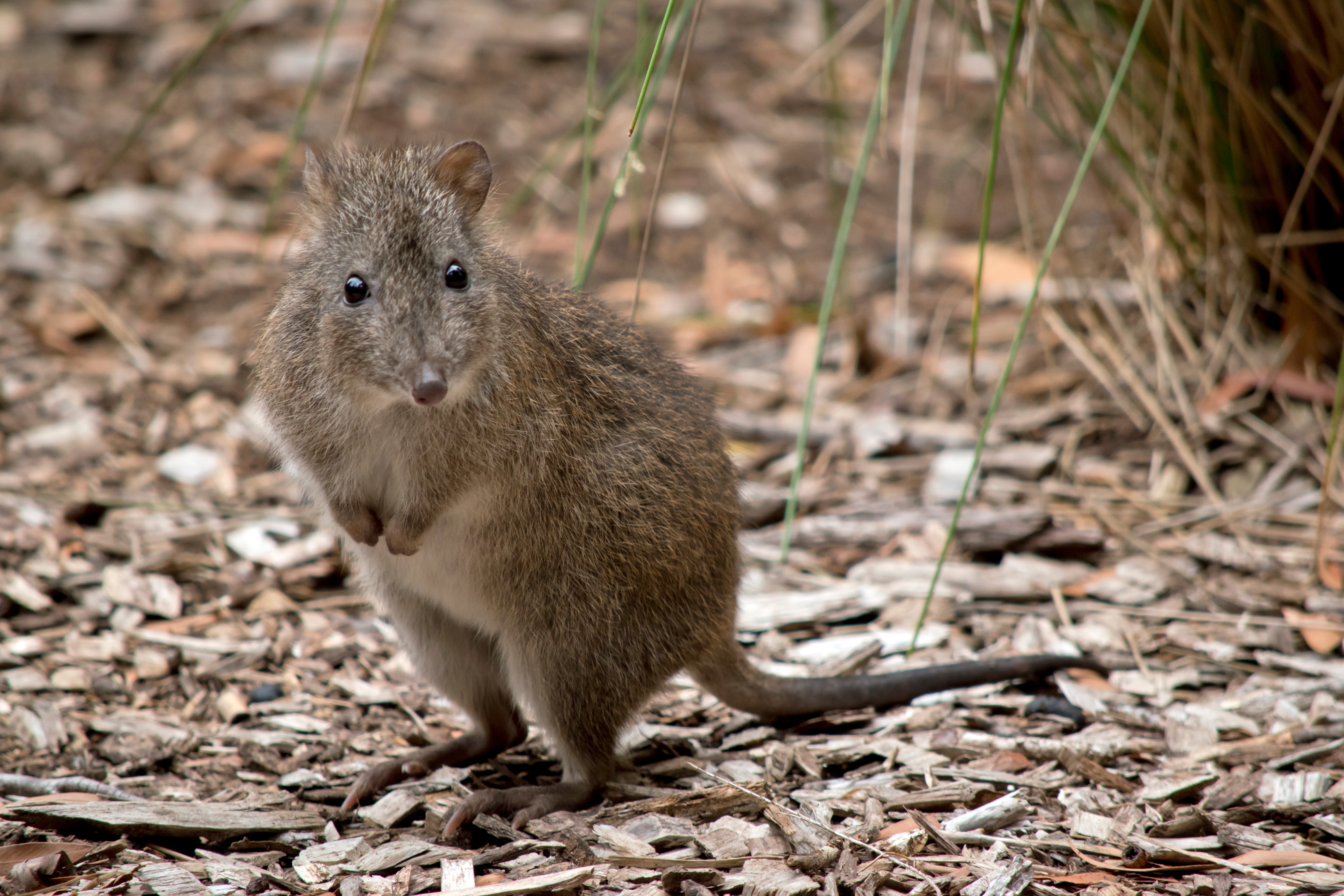Potoroo, << poh tuh ROO, >> is the name for several small Australian mammals related to kangaroos and wallabies. Potoroos are marsupials—that is, mammals that give birth to extremely underdeveloped young. They belong to a marsupial family that also includes bettongs and rat-kangaroos. Traditionally, biologists have referred to all of these animals as rat-kangaroos because of their somewhat ratlike appearance. 
Three species (kinds) of potoroos are the long-nosed potoroo, the long-footed potoroo, and the broad-faced potoroo. Because of human activities, the first two of these species have become threatened, and the third became extinct. People have destroyed potoroo habitats and introduced animals, including foxes, that prey on the marsupials.
Adult potoroos typically measure 17 to 29 inches (44 to 74 centimeters) long, including the tail, and weigh about 1 1/2 to 5 pounds (0.68 to 2.2 kilograms). All have grayish or brownish fur and long tails. Like kangaroos, potoroos possess larger hind legs than front legs. They normally travel on their hind legs using a bounding, hoplike gait. They also can crawl on all four feet.
Potoroos live in a variety of habitats with dense vegetation. They sleep during the day and become active at night. Potoroos scratch for food in the topsoil or under twigs and leaves. Underground fungi provide a major part of their diet, but they also feed on bulbs, nuts, roots, seeds, and soft green parts of some plants. In addition, the long-nosed potoroo eats insects and other soft-bodied animals. Female potoroos generally give birth to one offspring at a time.
